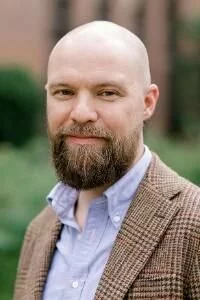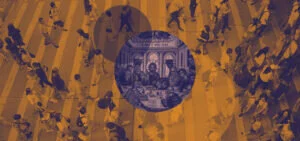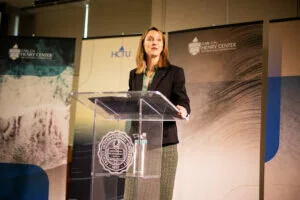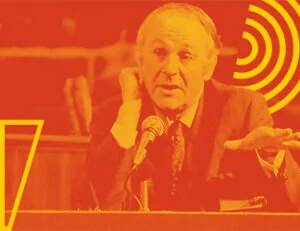Tempted: I see that I must be placed in the ground and reduced to dust. A bed will be spread out for my body in the grave and therefore I said to that place of rottenness, ‘You are my father,’ and to the worms, ‘You are my mother and sister’ (Job 17:14).
Comforter: Do not consider the ashes and dust in which you were placed, but consider your future resurrection from the ashes and dust which we await by faith. If, with Job, you say to that place of rottenness, ‘You are my parents,’ say also with him that your Redeemer lives, who at that last day will raise you again from the earth. He will clothe you with skin so that in your flesh you will see God (Job 19:25–26).Johann Gerhard, Handbook of Consolations: for the Fears and Trials That Oppress Us in the Struggle with Death, trans. Carl L. Beckwith (Eugene: Wipf and Stock, 2009), 74.
In 1611, the Lutheran scholastic theologian Johann Gerhard published a Handbook of Consolations. The little book was Gerhard’s contribution to the Christian devotional tradition known as ars moriendi, the art of dying, a genre of texts written to aid Christians in seeking a faithful death. Gerhard’s Handbook is written in the form of a dialogue between a tempted Christian, assailed by various doubts, and a comforter, who responds to the doubts with Scripture and voices from the Christian tradition. The temptation described above Gerhard calls pulveris horror, “The Dread of Dust.”
Dust, Bodies, and Souls
“There are two main ways in which my thinking about my research has shifted in light of the pandemic,” says Jon Thompson, one of the Henry Center’s 2021-22 Resident Fellows. “The first is that fear of death remains in the modern world one of the most profound realities of our species. We tend to try to ‘hush up’ death as moderns, and we certainly put away from ourselves the physical reminders of our mortality.” Thompson was taken aback by the fear of death that he saw, not only in other Christians, but also the fear he experienced himself when the pandemic first set in. But the pandemic also reconfigured how we perceive other human bodies, namely, as potential threats. “One sign of this was the acceptance of the notion that those who were dying with Covid-19 could (due to epidemiological concerns) be required to die without any loved ones or a pastor present.” Although the risk of contagion that underwroteThe fear of death remains in the modern world one of the most profound realities of our species this policy was very real, it is also the case that concerns of our own mortality and of the threat that other human bodies posed led to drastic alterations of how Christians have traditionally approached the experience of death.
But what are human bodies? And how do our bodies relate to us—to the ‘you’ and the ‘me’ that seem to be simultaneously distinct from our bodies and yet in some deep way united to them? Is the real ‘you’ something like the depiction in Pixar’s Soul, a translucent blue persona that inhabits our bodies that can—through a cosmic mishap—accidentally inhabit another person’s body, or even a therapy cat? Or are ‘you’ in some way identical to your physical body, such that all that ‘you’ are is ultimately reducible to physical properties and processes? And how does this question relate to what Christians believe about “the resurrection of the dead, and the life of the world to come”?
Jon Thompson’s project will investigate these questions, bringing recent research on embodied cognition into conversation with one traditional account of the metaphysics of human persons.
“Embodied cognition” refers to a recent research program at the intersection of psychology, neuroscience, and philosophy of mind that draws attention to the important role that the human body plays in our cognitive states and abilities. In contrast to views that see human cognition as most analogous to computational processes (and the brain as the computer), embodied cognition theorists emphasize the complex and important role of the body in our mental lives. Thompson sees this research program as a fruitful dialogue partner:
“Embodied cognition theorists rightly emphasize the centrality of the body (as well as its cultural and historical situation) for the formation and recognition of a sense of personal identity and for the development of virtue. For instance, the cognitive psychologists Strejcek and Zhong claim that ‘recent theoretical and empirical work . . . supports the position that the body is not only an obstacle to morality and moral action, but also a contributor to moral reasoning.’ This accords with the Christian theological notion that the body is a moral ‘partner’ with the soul or mind. However, I believe that this paradigm of embodied cognition needs a robust metaphysical framework to avoid reductionism about human agency.”
Form and Matter
Thompson’s project aims to supply just such a metaphysical framework, drawing on a view of the human person that fell out of favor in the modern era but has recently started to make a comeback. “Hylomorphism,” Thompson explains, “is the view that the soul is the substantial form of the human being.”
Speaking more generally, hylomorphism refers to the family of broadly Aristotelian views that hold that physical substances are composed of matter and form. On these views, form is what unifies matter and makes objects the sorts of things that they are; hylomorphism about human persons is view that the human soul is a form in this sense. “So the principleOn hylomorphism the soul is the primary cause of the identity and unity of the body, but the body is no less an essential part of me of thought in me (the soul),” Thompson notes, “is also the principle of unity and organization for the whole human being that I am. On hylomorphism, the soul is the primary cause of the identity and unity of the body, but the body is no less an essential part of me.”
This view of the human person has deep roots in the Christian tradition. “Hylomorphism was very popular (even a consensus) across the Christian West for much of the history of philosophy, and this was in part because it made sense of the Scriptural emphasis on bodily resurrection. But that changed in the seventeenth century with the ascendance of new forms of substance dualism and of more purely psychological accounts of personal identity.” Thompson sees both strong substance dualism and purely psychological accounts of personal identity as too reductive: “One issue with strong substance dualism is that it suggests that I am identical to my soul. This is the classic formulation going back to Descartes. But that is difficult to square with the fact that the Christian creeds profess the resurrection of the flesh—the very body that goes down into the ground. On the other hand, physicalism tends to suggest that I am identical with a wholly physical entity. There are several problems with this approach, but one of the most significant is that it tends to analyze cognition in reductive way.”
Thompson’s project aims to show how hylomorphism can integrate developments in the psychology of embodied cognition, while at the same time steering a middle way between strong substance dualism and physicalism.
We Look for the Resurrection of the Dead
Johann Gerhard’s Ars Moriendi was not a mere scholastic exercise. As he wrote the Handbook of Consolations he was grieving the death of his own infant son. Within a month of its publication his wife joined her son in death. Gerhard himself had narrowly escaped death twice; once when he fell victim to the plague in 1598, and then again in 1603 when he was so ill he wrote his last will and testament.Carl L. Beckwith, Introduction to Handbook of Consolations, by Johann Gerhard, xii. When Gerhard wrote of the dread of dust, he spoke as one closely acquainted with the frailty of our bodies. And yet, he also confessed it is these bodies—this dust—that is bound for immortality.
“This body,” Thompson writes, “this body returns after death because it is an essential part of the person whom God is working to redeem.” The Christian confession that it is this body which will be raised, that it is in this flesh that we will see God, must be affirmed even—perhaps especially—in times of plague. “We are still struggling to retrieve embodied practices in scholarship, teaching, hospitality, and religion—which suggests to me that Christians can and should recover the unutterable weight of the Incarnation and resurrection for our understanding of the goods of our embodiment.”
2021–2022 Henry Resident Fellows
 |
Christina Bieber Lake Clyde S. Kilby Professor of English, Wheaton College “Designed to Attend: Toward a Theology of the Literary Imagination” |
 |
Gijsbert van den Brink Research Chair for Theology & Science, Vrije Universiteit Amsterdam “Theological Anthropology in the Anthropocene” |
 |
James M. Arcadi Associate Professor of Systematic Theology, TEDS “The Priesthood of All Humanity” |
 |
Philip Woodward Assistant Professor of Philosophy, Niagara University “Persons: A Contemporary Philosophical-Scientific Synthesis” |
 |
Jon W. Thompson Postdoctoral Research Associate, The Faraday Institute for Science & Religion “Embodied Cognition, Hylomorphism, and the Resurrection of the Body” |







Comments
Be the first one to make a comment!